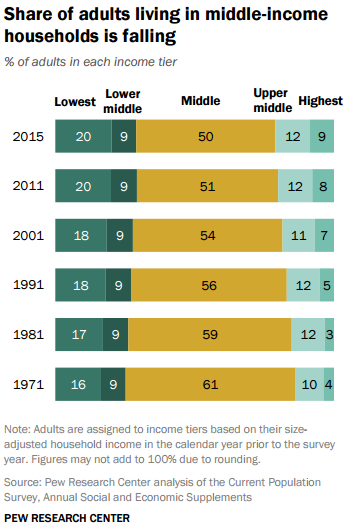 We know the pandemic is impacting people and communities unequally. What does that look like in Rochester?
We know the pandemic is impacting people and communities unequally. What does that look like in Rochester?
Based on an inquiry from the United Way of Greater Rochester and our community’s Systems Integration initiative, CGR mapped Census data correlated with economic risk linked to the outbreak. Cornell University’s Industrial and Labor Relations School developed and analyzed estimates of households and communities most at risk of job loss. The authors found the people and communities most vulnerable based on their occupation are the same we already know to be struggling – neighborhoods that are low-income, have a high share of renters rather than homeowners, and higher shares of residents of color. Read more »
 As you’ve read elsewhere and heard from politicians ad nauseum, the middle class in America is shrinking. The consequences for society are significant and should not be underestimated. Let’s first review the facts, as reported recently by the Pew Research Center, then explore the reasons and possible consequences.
As you’ve read elsewhere and heard from politicians ad nauseum, the middle class in America is shrinking. The consequences for society are significant and should not be underestimated. Let’s first review the facts, as reported recently by the Pew Research Center, then explore the reasons and possible consequences. Pew observes that the number of adults considered “middle class”—about 121 million—is now equal to the number both above and below them by income. Look back to 1971 and you’ll see a quite different distribution—instead of half, 61% of Americans were in the middle class.
Pew observes that the number of adults considered “middle class”—about 121 million—is now equal to the number both above and below them by income. Look back to 1971 and you’ll see a quite different distribution—instead of half, 61% of Americans were in the middle class.